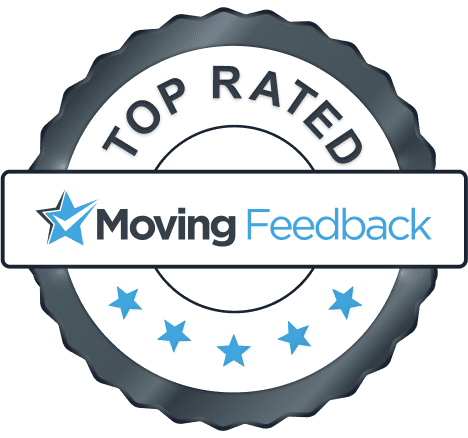Embarking on a journey across miles, the concept of long-distance moving carries an array of challenges.
While long distance moves can be complex, seniors and individuals with disabilities have an extra layer of challenges to deal with.
This article explores the special considerations required for a smooth long-distance move for seniors and those with disabilities, highlighting the importance of careful planning and empathetic support in making this transition a positive new chapter.
Important Factors to Keep in Mind
1. Preparing a Checklist
The most important thing you would want to do when moving as a senior or with disabilities is to prepare a moving checklist. It will not only streamline your moving preparation but also prevent you from causing any unnecessary delays.
The checklist should be comprehensive and prepared a few months before the move. It should contain the timeline, the plan of the new house (and each room), the need for modifications to the new home, and so on.
Moving long distance is tough, but if you are diligent, disciplined, and keep essential things handy, you’ll make it much more manageable.
2. Properly Schedule Help
If you suffer from a condition that impacts your vision, cognitive ability, or mobility, you should consider professional help for your move. Don’t hesitate to contact your friends, family, or relatives if you need help.
You would want to get help, especially in terms of packing and unpacking, and lifting heavy items like furniture. Ensure you do not hurt yourself in the process; it would make things all the more difficult.
3. Make a Budget
You would want to avoid falling into a situation where you must pay much more at the end of the process than you had expected or planned. Start off by roughly estimating the entire expense of your move.
Do thorough research on hiring a moving company. You must also consider additional expenses, such as relocation or medical assistance.
Some of the other items that you might want to take into consideration are:
- Adapting homes for seniors and disabilities after a move.
- Extra services, such as pet relocation, cleaning services, etc.
- Moving insurance.
- Personal travel expenses.
- Utility service in your new home.
- Any sort of upfront security payment.
4. Hire Long Distance Movers
Consider hiring a moving company if you or your family member is moving long distance. Exploring accessible moving options is pivotal in ensuring a seamless and comfortable transition for seniors and individuals with disabilities.
The cost to hire movers also varies and depends on the home’s distance and size. For example, for a distance of more than 2500 miles and a house of 2-3 bedrooms, it could end up somewhere between $3900-$7500. Refer to a moving cost calculator for a more personalized quote.
While looking to hire any moving company, make sure to look for senior-friendly moving services.
5. Keep an Essential Box Ready
Keeping an essential box is critical, especially for a senior or a person with a disability.
The basic items that an essential box must contain include medical aids, food, cleaners, dishwashing soap, toilet paper, scissors or knife, a flashlight, electronic chargers, a basic tools box, toothbrush, toothpaste, shampoo, some important documents, etc.
6. Senior Relocation Assistance
This is special assistance provided to older adults or individuals with a disability during the moving process. It could include moving from a family home to a smaller apartment, downsizing to a retirement community, transitioning to an assisted living facility, or relocating to a nursing home.
7. Packing Slowly
Seniors or people with disabilities shouldn’t rush the moving process. Doing things right the first time will make the moving journey less stressful. Make sure to double-check the inventory while packing. Each package from every room must be systematically labeled so that it doesn’t lead to confusion when unpacking.
8. Marking the Boxes Properly
It is vital to organize our items. Make sure to segregate and put things into separate categories. For example, keep things that wouldn’t go with the movers separate by labeling them accordingly. Plus, dividing boxes according to the rooms they would go to will make your move easier.
9. Decide What You Want to Do With All That Furniture
Before moving, you must decide on the furniture you’ll need in your new home. It entirely depends on the type and size of your new home. For example, if your new home’s living room is smaller, you don’t need that extensive wardrobe you currently own. Thus, you need to consider your house dimensions before deciding what you really want to keep.
Also, make sure you place your furniture in the correct spot; otherwise, it will be difficult to move things later on. Make sure that the furniture does not, in any way, restrict your mobility in the house.
10. Focus on Healthcare
Try to locate the nearest medical facility in the new locality that you are moving into. Before you move, you must transfer all your medical records to the nearest healthcare facility.
Find a physician as soon as possible and schedule an appointment. Also, ensure you refill all your medications until you have an appointment with your new physician. You can also look for healthcare security benefits available in the new state.
11. Pets
When moving long distances with pets, we recommend going for a pet relocation service. If you decide to put your pet up for adoption, you may find shelter homes nearby that can help.
It’s essential to thoroughly research these shelters and ensure they have a reputable track record of caring for and rehoming animals. Reach out to them in advance to understand their adoption process and make sure your pet will receive the care and attention it deserves.
FAQs
What should I look for primarily in a moving company to accommodate the needs of seniors and people with disabilities?
Choosing the right long distance moving company for seniors and those with disabilities can seem to be a challenging task. Always try to find companies with prior expertise in moving senior citizens and individuals with disabilities.
Further, you can also look out for customer reviews, ensure they have the proper equipment for moving, etc. Exploring accessible moving options is pivotal to ensuring a seamless and comfortable transition for seniors and individuals with disabilities.
Can you give me any moving tips for seniors and individuals with a disability?
Sure! Here are some essential tips:
- Make a moving checklist for seniors and disabilities
- Communicate with the moving company or people with expertise, and ensure accessibility in your new place.
- Arrange for necessary medical support.
What about emotional support during a long-distance move?
Elderly relocation can be emotionally and mentally daunting. Having your family and relatives around can ease the stress and help provide for a calmer move with emotional support.
When is the best time to move?
The best time to move is during fall or winter months. Make sure you are mentally ready for the process and all of the challenges that may come with it.
Are there any legal aspects to consider when moving?
Yes, some legal aspects are to be considered when elderly and disabled individuals move. You must consider consulting legal professionals on healthcare, guardianship, and estate planning matters.
Can a Long Distance Move Be Stress-Free for Seniors and Individuals with Disabilities?
Moving is a long-drawn battle. It may lead to an emotional breakdown if not properly synchronized.
From addressing accessibility concerns and managing cherished possessions to emotional support, our comprehensive list will help seniors and people with disabilities navigate their relocation journey confidently and resiliently.






